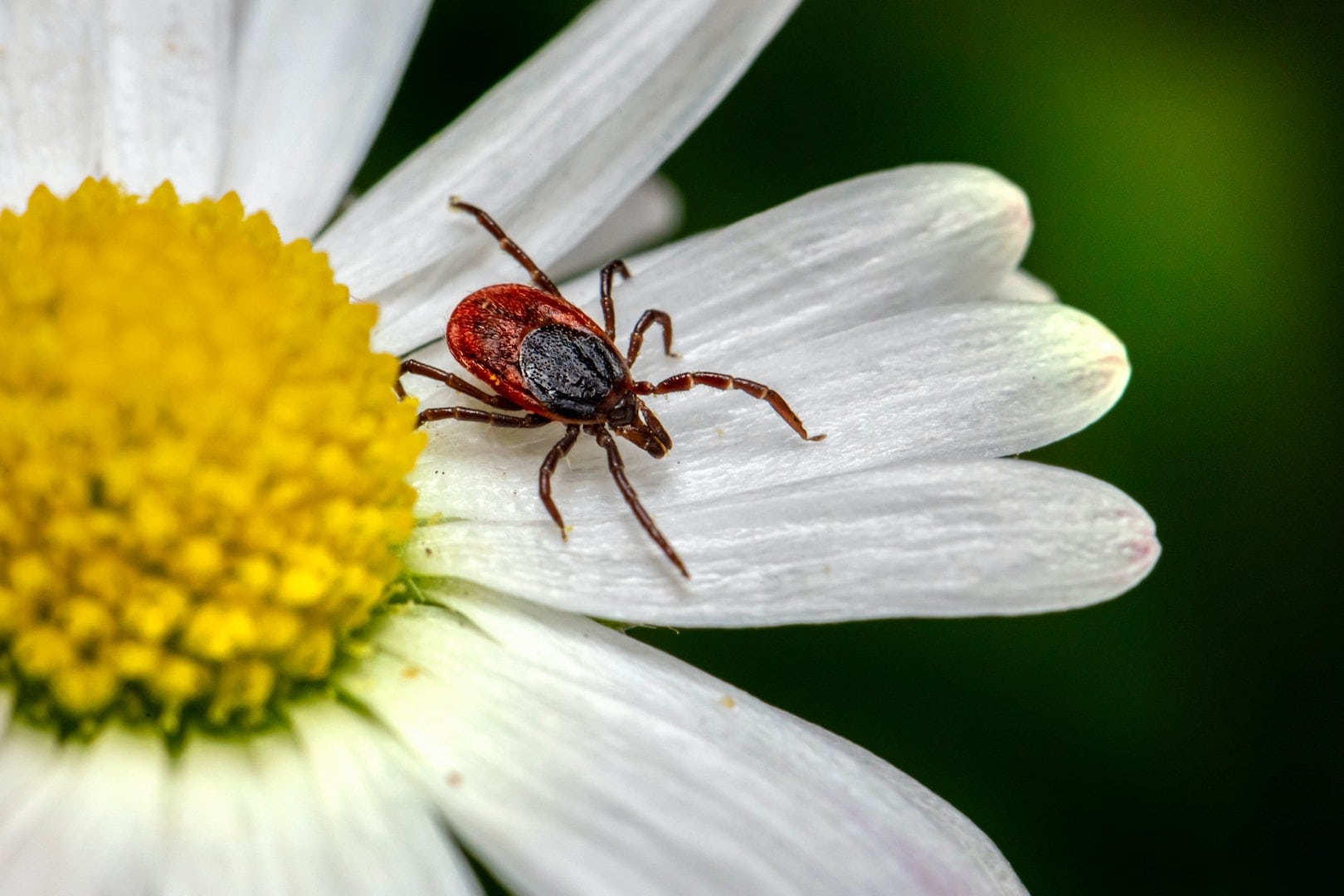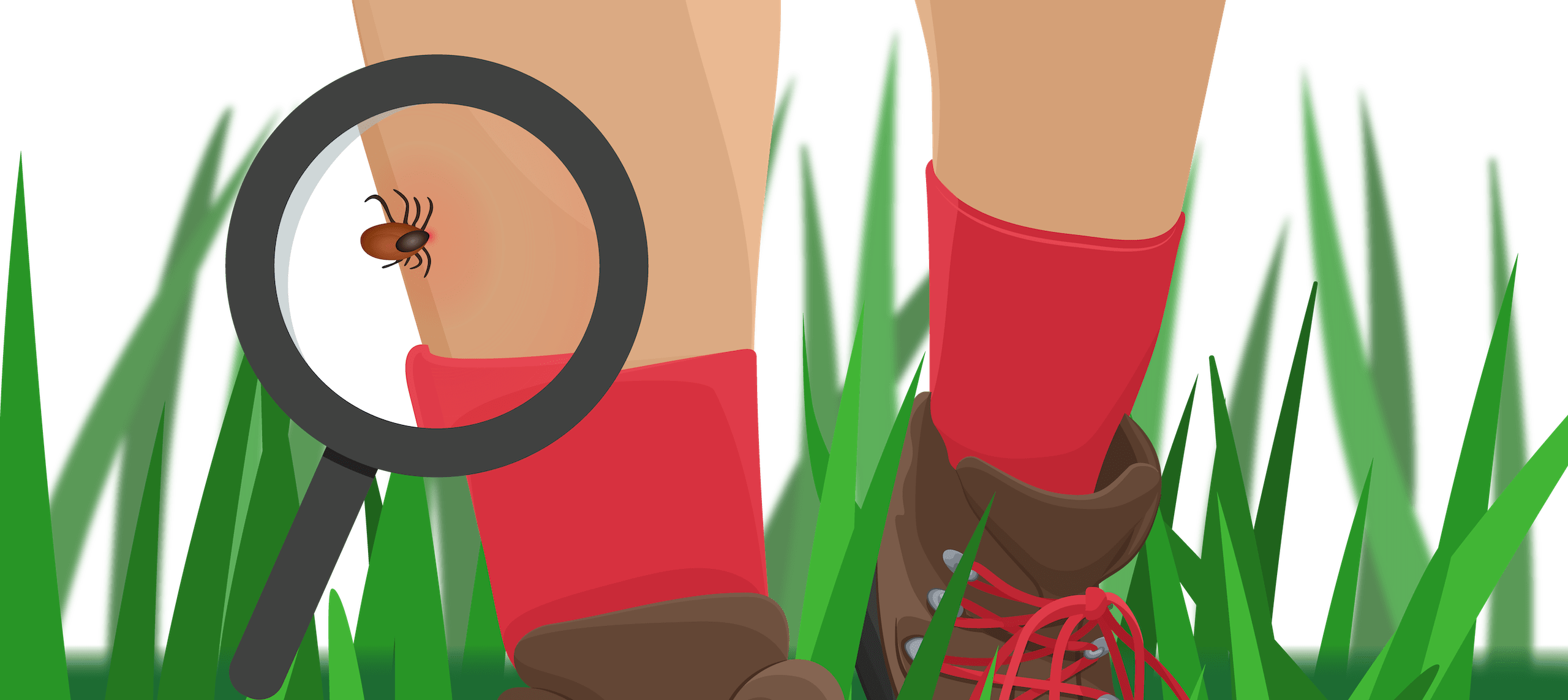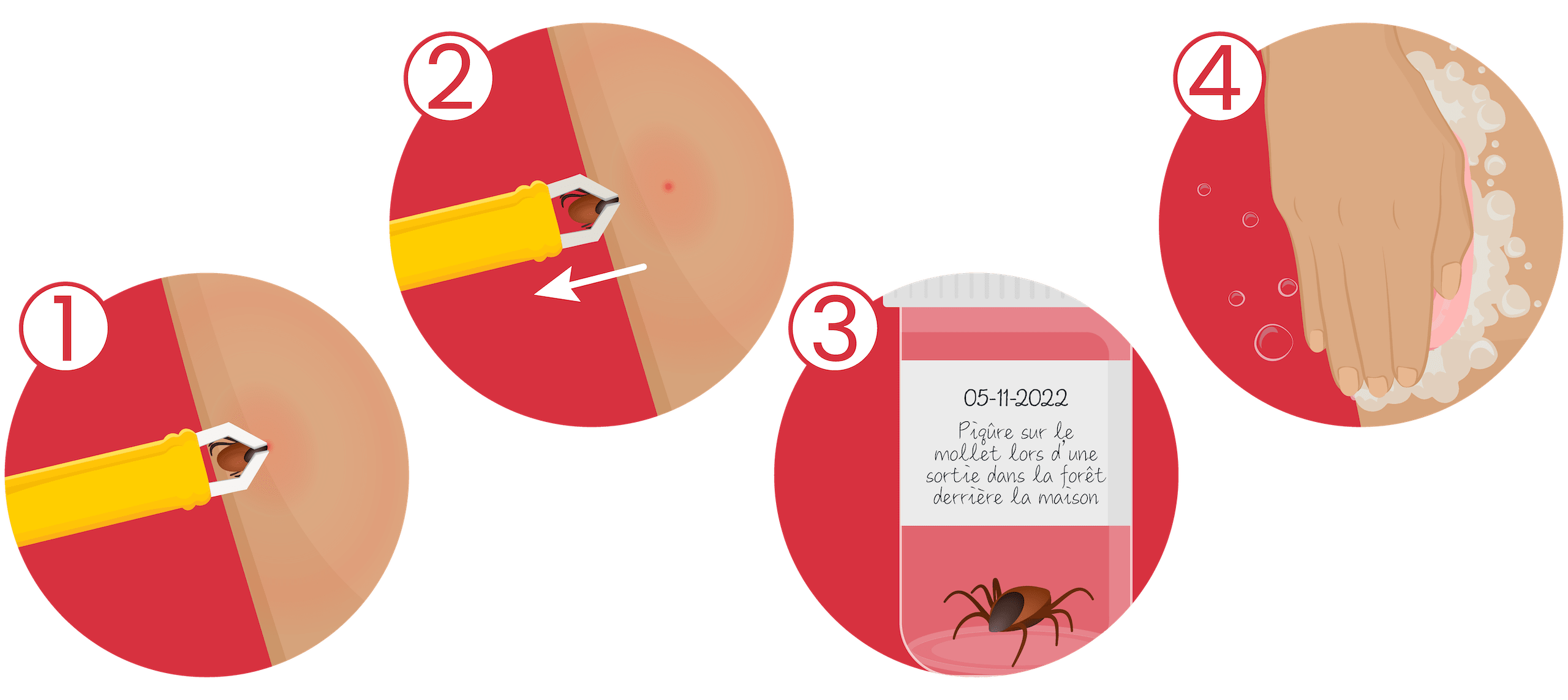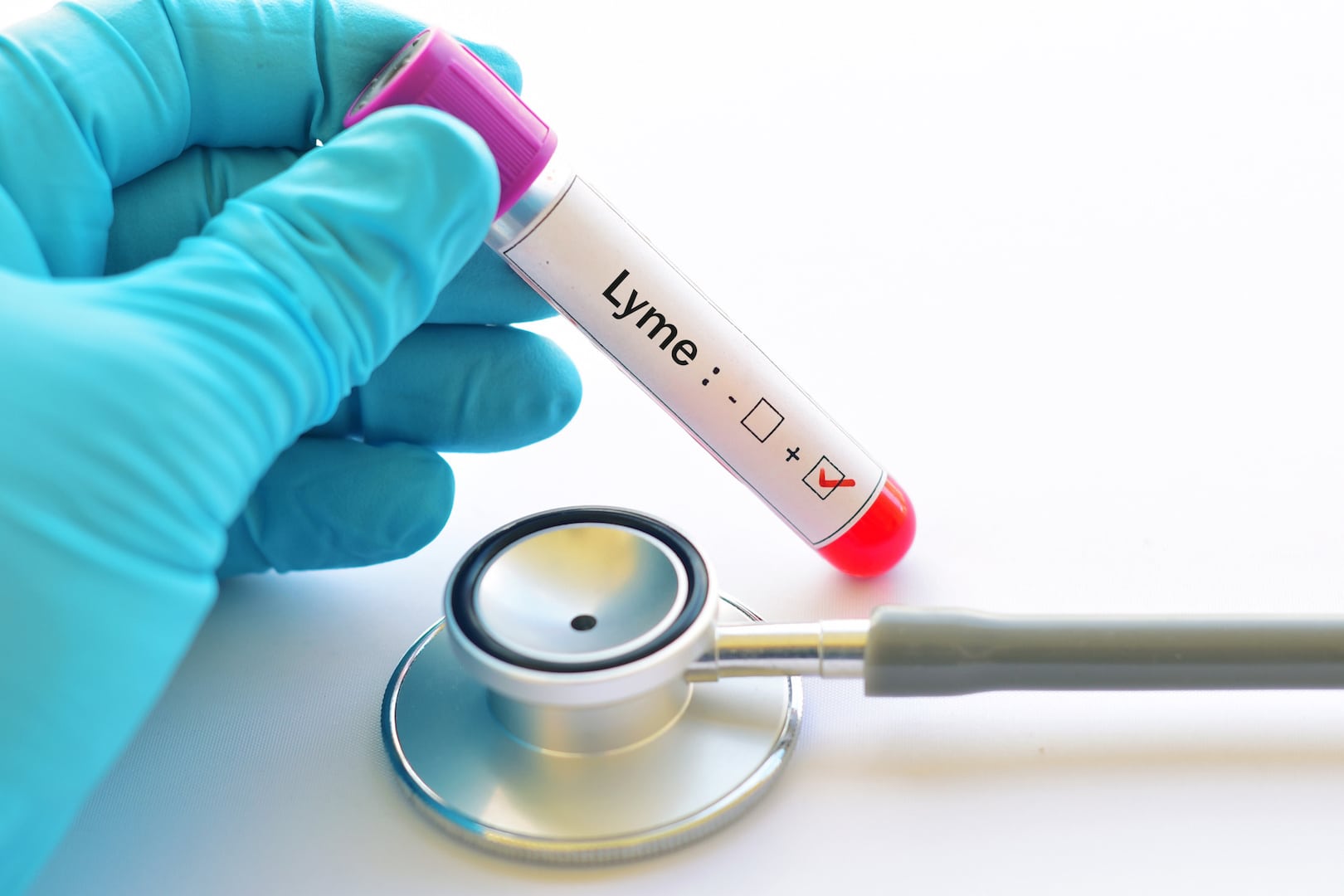A very subtle little bug: the tick!
Credit © [Erik Karits] / Unsplash
Are you outdoorsy or a gardening enthusiast?
The month of May is ideal for enjoying outdoor activities. However, springtime in Quebec also means the end of hibernation for the 12 species of ticks that reside here. An average temperature of at least 8 degrees for several days in a row is enough for them to resume their activities. (piqure-de-tique.ch, s.d.)
Laurie Levesque, mai 2022
Are ticks dangerous?
Not all ticks are dangerous. In Quebec, they are actually listed in the following five types: Amblyomma, Dermacentor, Ixodes, Rhipicephalus and Haemaphysalis (INSPQ, n.d.(a)) The only one that is potentially harmful to health is the Ixodes tick, specifically Ixodes scapularis, commonly known as the blacklegged tick or the deer tick. It is considered a pest because it can transmit Lyme disease. They can cause the disease when they carry the Borrelia burgdorferi bacteria (Gouvernement du Québec, 2022(a)).
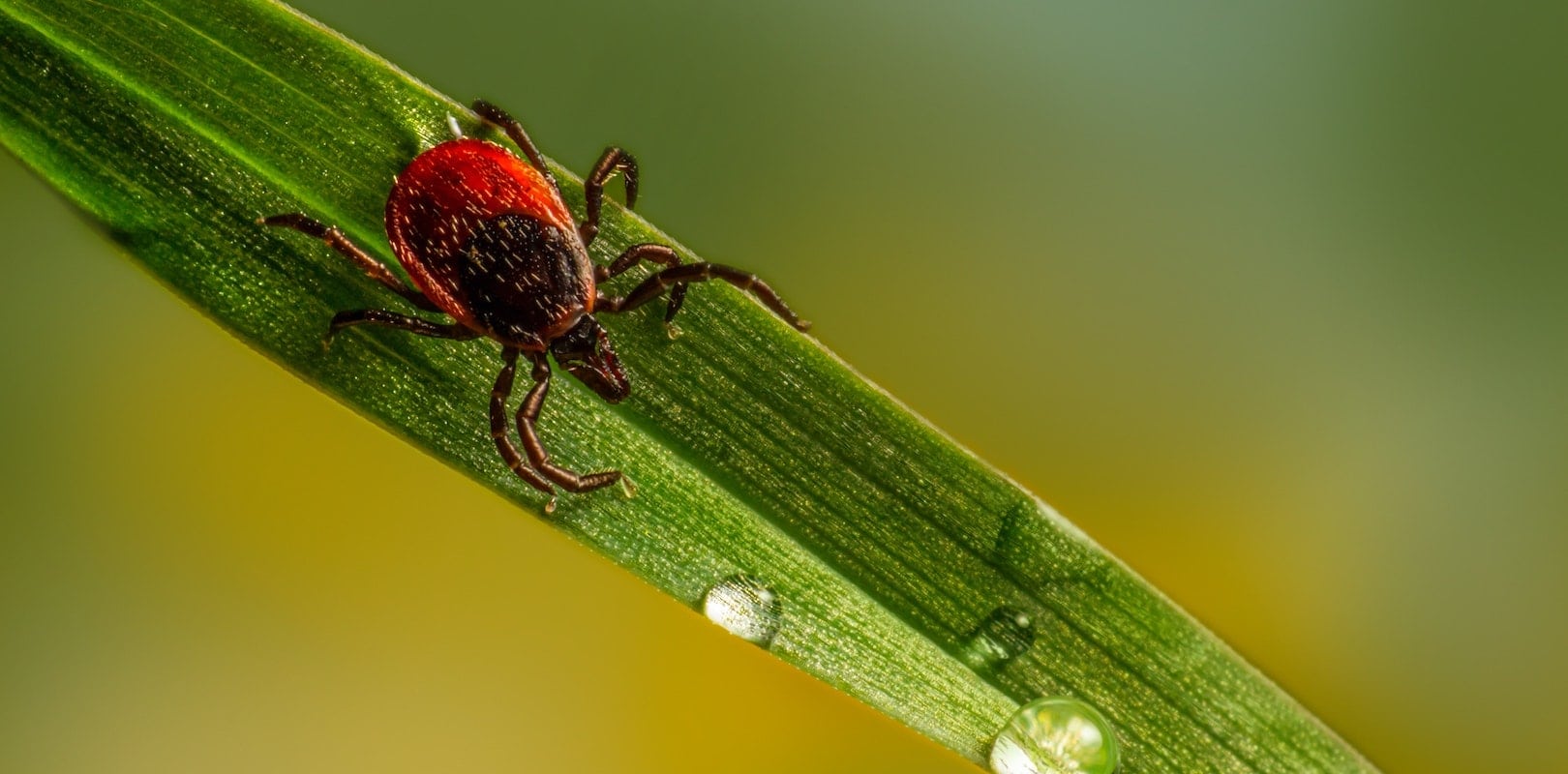
Ixodes scapularis ticks, what’s that?
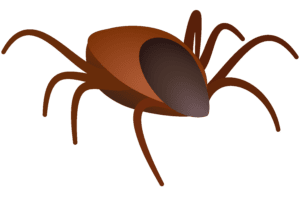 Appearance
Appearance
This family of insects has no wings or antennae. Blacklegged ticks have four pairs of legs which, as the name suggests, are black. The male’s body is dark brown, almost black. The female, on the other hand, has a black patch covering a reddish-brown abdomen. (Villeneuve, 2012) When they are not gorged with blood, their size varies between 0 and 5 millimeters depending on their three stages of development: larva; nymph; adult. They can triple in size when filled with blood. (INSPQ, n.d.(b)) It is important to note that blacklegged ticks are difficult to distinguish from other tick species. That is why, in case of a bite, it is recommended to keep the tick in an airtight container. This way, if the condition declines in the following days or weeks, it will be easier to determine if it was carrying the bacteria that causes Lyme disease.
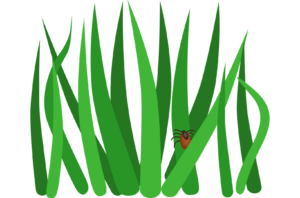 Habitat
Habitat
Ticks hide in places with vegetation, such as
- Forests ;
- Woodlands ;
- Tall grass ;
- Gardens ;
- Home landscaping ;
- Leaf litter.
*(Gouvernement du Québec, 2022 (a))
According to INSPQ surveillance data, the areas most at risk are
- The northern and western parts of the Estrie region ;
- A large part of the Montérégie region ;
- The southwestern part of the Mauricie and Centre-du-Québec region ;
- The southwestern part of the Outaouais region.
However, ticks are present in all regions of Quebec except for the most northern regions: Northern Quebec, Cree Territories and Nunavik. Visit https://www.inspq.qc.ca/zoonoses/maladie-de-lyme (only available in french) to follow the evolution of the risk of acquiring Lyme disease and to know all the areas at risk. *(Gouvernement du Québec, 2022 (a))
Why do ticks attach to our skin?
As mentioned earlier, ticks have three stages of development. They must feed on the blood of animals or humans to pass from one stage to the next. Their meal can last between 3 and 10 days, which means that it will remain attached to your skin all that time if you do not remove it (INSPQ, n.d.(b)).
Will I feel it if a tick has latched onto me?
Probably not, since its bite is usually painless due to the anesthetic substance it secretes through its saliva. So, the only way to know if a tick has latched on to you is to inspect your body after each outing in a place where they are likely to be found.
They like to cling to humid areas that are rich in blood vessels. You should therefore take care to check these areas of your body more carefully. For example, carefully inspect the back of your knees, the underside of your armpits and the back of your ears. Of course, you don’t have to look only at these areas, as they can be found on any part of your body. (Buchner, 2021) When you look at it, you will see his head buried in your skin and his body on the outside. Besides, if you take a bath or a shower after your outings, the inspection will be easier and it could drop any tick that was not yet well attached.
How do I remove a tick?
- Using fine tweezers or a tick puller, grasp the tick as close to your skin as possible, being careful not to squeeze its abdomen.
- If you are using fine pliers, pull gently but firmly and continuously, without twisting or crushing to avoid breaking the tick.
- If you use a tick puller, follow the manufacturer’s instructions.
- If the head of the tick remains embedded in the skin, you can remove it with the pliers. If you can’t, leave the head in place and let the skin heal.
- After removing it, store it in an airtight container in the refrigerator and note the part of the body and location where you were bitten, and the date the tick was removed.
- This may be helpful if your condition worsens and you need to see a doctor.
- Clean your skin with soap and water.
- Wash your hands.
*(Gouvernement du Québec, 2022 (b))
It is important to see a doctor if:
- After being bitten by a tick, you have redness that is 5 cm in diameter or larger.
- After being bitten by a tick, you have a rash that persists for more than 48 hours.
- Within weeks or months of doing an outdoor activity that may expose you to ticks, you have one or more symptoms of Lyme disease.
- Call Info-Santé if you have been bitten in an area at risk.
*(Gouvernement du Québec, 2022 (a))
What you need to know about Lyme disease…
Symptoms
The first signs of the disease usually appear between 3 and 30 days after the bite of a tick carrying the bacteria. Of course, symptoms vary from person to person, however, the most common symptom is a painless redness that reaches about 5 centimeters around the bite, present for at least 48 hours. The following symptoms may also be experienced:
- Fatigue
Fever
Courbatures
If not diagnosed and treated soon enough, the following symptoms can occur in the weeks and months following the bite:
- Appearance of several red spots that spread across the skin, with little or no pain or itching.
- Paralysis of the face, numbness of a limb, neck pain, severe headaches.
- Inflammation and pain in the joints.
- Chest pain, palpitations or dizziness.
*(Gouvernement du Québec, 2022 (a))
Treatment
Lyme disease is treated with antibiotics prescribed by a physician. The nature and duration of the treatment depend on the stage of the infection and the symptoms present. In general, treatment allows for a rapid and complete recovery from the disease. However, in some treated individuals, some symptoms may persist for several months. (Gouvernement du Québec, 2022(a))
Transmission
After being bitten by an infected tick, if it remains attached to the skin for less than 24 hours, the risk of developing the disease is very low. However, this risk increases if the tick remains attached for a longer period of time. (Gouvernement du Québec, 2022(a))
How to avoid being bitten by a tick?
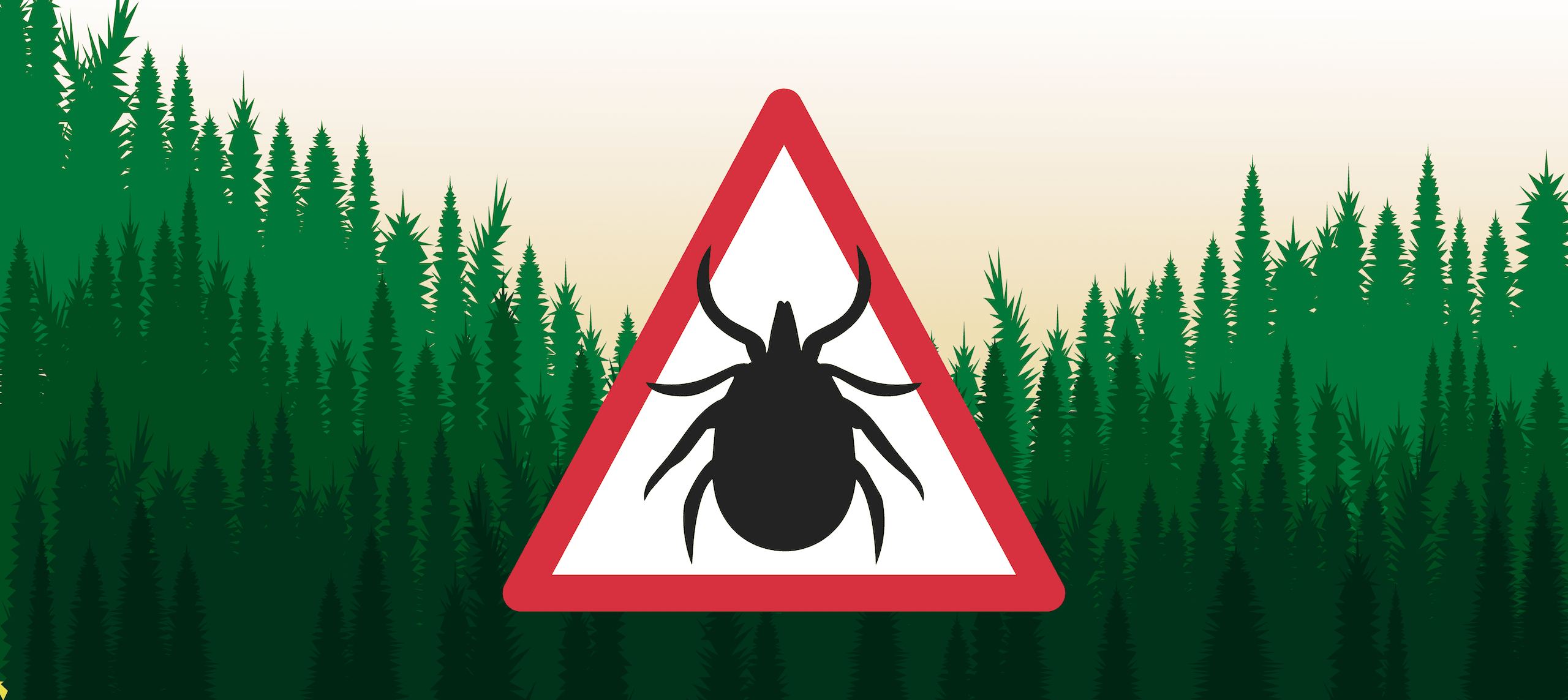
Ticks do not jump, fly or drop from a high surface (e.g. a branch). They can, however, hide in plants and cling to you when you walk by. (Gouvernement du Québec, 2022(a))
To avoid them – Physical measures
- Walk on the beaten path and avoid walking in tall grass.
- Use mosquito repellent (DEET) on exposed parts of your body (except your face).
- Wear a hat, closed shoes and long clothing.
- Tuck your sweater into your pants and the bottom of your pants into your socks.
- Wear light coloured clothing when walking (it does not keep them away, but makes them more visible on your clothing).
*(Gouvernement du Québec, 2022 (a))
To avoid them – Environmental measures
- Cut tall grass and brush around your home and mow your lawn.
- Remove dead leaves and weeds from lawns and the edges of wood storage and sheds.
- Create wood chip or gravel paths between wooded areas and lawns, patios and play areas.
- Locate play areas away from trees in a sunny location.
- Stack wood carefully, under cover and in a dry place (this can keep rodents away, which attract ticks).
*(Gouvernement du Québec, 2022 (a))
To avoid them – In-home measures
- Examine your equipment after returning from an outdoor activity (e.g. backpack).
- Check your pets’ skin after returning from outdoor activities.
- Remove ticks from your clothing by putting it in the dryer on high heat for 10 minutes. If clothes are too dirty to put in the dryer directly, machine wash them in hot water, ideally for at least 40 minutes. Then put them in the dryer on high heat for at least 60 minutes (the clothes must be completely dry).
*(Gouvernement du Québec, 2022 (a))
- Buchner, Jill. 02 août 2021. « 20 choses à savoir sur les tiques du Québec et du Canada ». https://www.selection.ca/sante/20-choses-a-savoir-sur-les-tiques-du-quebec-et-du-canada/ [Last consulted on 17/05/2022]
- Gouvernement du Québec. 2022 (a). « Lyme Disease ». https://www.quebec.ca/en/health/health-issues/a-z/lyme-disease [Last consulted on 17/05/2022]
- Gouvernement du Québec. 2022 (b). « Removing a tick after a bite ». https://www.quebec.ca/en/health/advice-and-prevention/health-and-environment/removing-a-tick-after-a-bite [Last consulted on 17/05/2022]
- Institut national de santé publique du Québec (INSPQ). N.d. (a). « Autres espèces de tiques retrouvées au Québec ». Gouvernement du Québec. https://www.inspq.qc.ca/guide-d-identification-des-tiques-du-quebec/autres-especes-de-tiques-retrouvees-au-quebec [Last consulted on 17/05/2022]
- Institut national de santé publique du Québec (INSPQ). N.d. (b). « Est-ce une tique? ». Gouvernement du Québec. https://www.inspq.qc.ca/guide-d-identification-des-tiques-du-quebec/autres-especes-de-tiques-retrouvees-au-quebec [Last consulted on 17/05/2022]
- Piqure-de-tique.ch. S.d. « Risque par saison ». https://piqure-de-tique.ch/risque-par-saison/ [Last consulted on 17/05/2022]
- Villeneuve, Alain. 2012. « Les tiques, mieux les connaître, mieux s’en protéger ». Faculté de médecine vétérinaire de l’Université de Montréal. https://www.medvet.umontreal.ca/servicediagnostic/parasitologie/PDF/LestiquesMieuxlesconnaîtreetmieuxsenprotéger.pdf [Last consulted on 17/05/2022]
Article written by Laurie Levesque, content creator for the Saint-Bernard Academy. Edited and published by Emilie Bedard, Communications Manager.


